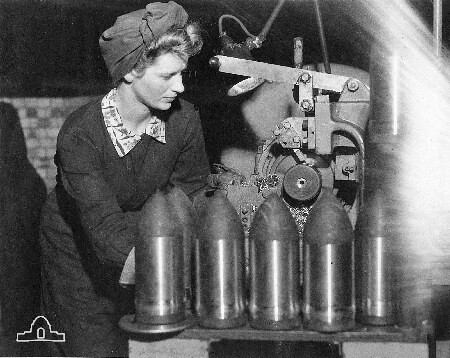 For most women during the early part of the 20th Century, their role mainly consisted of looking after the family and children in the home. Very few women had other jobs. However with the men gone women were also left with shortages of resources, as well as their fears for the future, and the grief and trauma of losing loved ones.
For most women during the early part of the 20th Century, their role mainly consisted of looking after the family and children in the home. Very few women had other jobs. However with the men gone women were also left with shortages of resources, as well as their fears for the future, and the grief and trauma of losing loved ones.
During World War I, it was uncommon for many women to have jobs, apart from domestic serving roles. The number of women working outside the home did increase slightly during this war but mostly in food, clothing and printing industry jobs that were already established as female roles.
 Many women were also actively involved as nurses and in other active service duties, and contributed more actively to war efforts through military service. Other Australian women were also closely connected with war through male relatives and friends away on military service.
Many women were also actively involved as nurses and in other active service duties, and contributed more actively to war efforts through military service. Other Australian women were also closely connected with war through male relatives and friends away on military service.
However, in World War II women were actively recruited into jobs that had always been the preserve of men.
By 1942, the tides of war had shifted to Australia's doorstep and roles changed out of sheer necessity. Australian women entered the workforce in unprecedented numbers and were even allowed to take on 'men's work'. These were jobs for the war, not for life. Women were paid at lower rates than men and expected to 'step down' and return to home duties after the war.
 Some of these roles included driving buses, working in factories, shipyards, security guards, mail deliverers, bread carters and The Australian Women's Land Army (AWLA). The AWLA was established in July 1942, in response to labour shortages in country areas. The Women's Land Army recruited women to work on farms where there were no men left to do the hard labour that was traditionally assigned to men. AWLA was not considered a military service and never included benefits such as the pensions, deferred pay and bonuses, which were available to those women who joined Women’s Royal Australian Naval Service (WRANS), Australian Women’s Army Service (AWAS) and others. By 1944 the Australian Women's Land Army had around 3000 members.
Some of these roles included driving buses, working in factories, shipyards, security guards, mail deliverers, bread carters and The Australian Women's Land Army (AWLA). The AWLA was established in July 1942, in response to labour shortages in country areas. The Women's Land Army recruited women to work on farms where there were no men left to do the hard labour that was traditionally assigned to men. AWLA was not considered a military service and never included benefits such as the pensions, deferred pay and bonuses, which were available to those women who joined Women’s Royal Australian Naval Service (WRANS), Australian Women’s Army Service (AWAS) and others. By 1944 the Australian Women's Land Army had around 3000 members.
By the end of the war women were expected to give up their jobs for men who returned home from overseas conflicts, this was often a difficult transition. Many women had enjoyed participating in the workforce, especially the extra income that having a job provided. As a result the 1950s saw a dramatic change in the way women's roles were defined, as females were encouraged back into the home and their traditional roles of wives and mothers reinforced and encouraged.
Exercises:
On a new page in your books put the Heading “Changing Roles for Women”. Under the heading write a 1/2 page summary based upon the information above. After you have completed the summary, download the following resource booklet and read through pages 9 and 10. Answer questions 19, 20, 21, 22, 23, 24 and 25 in your books in full sentences.
Homefront




 3:03 PM
3:03 PM
 Mark
Mark



0 comments:
Post a Comment